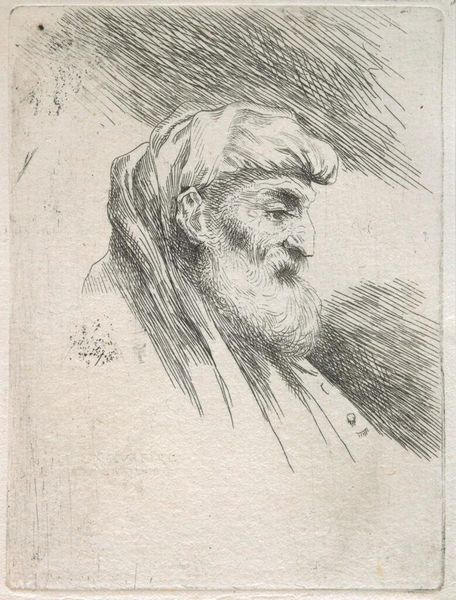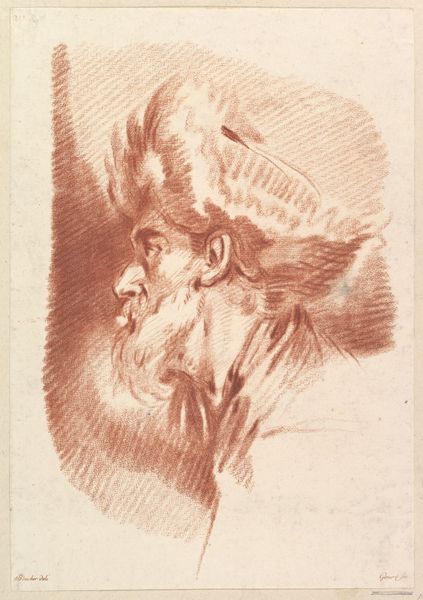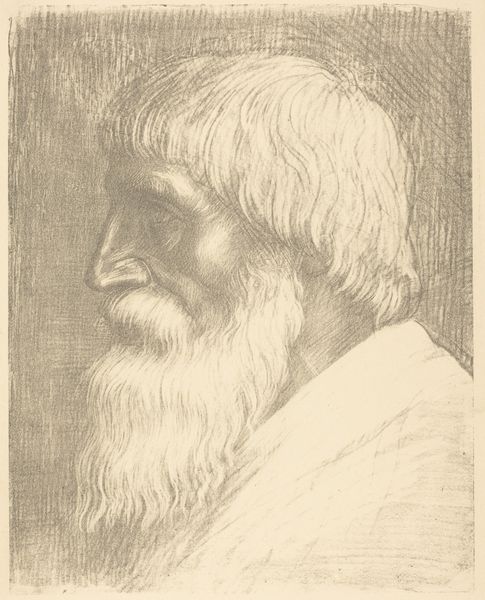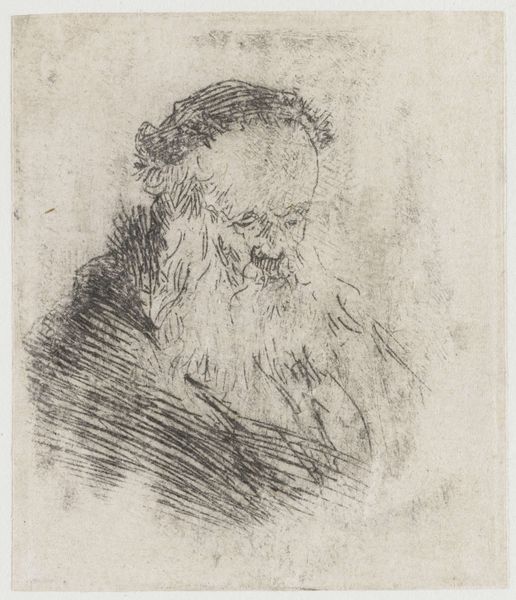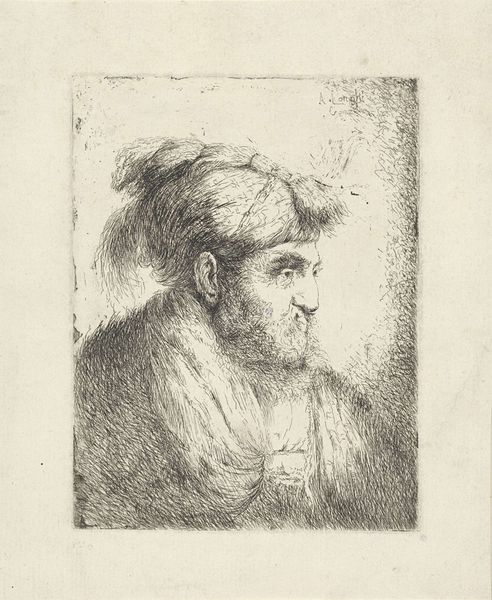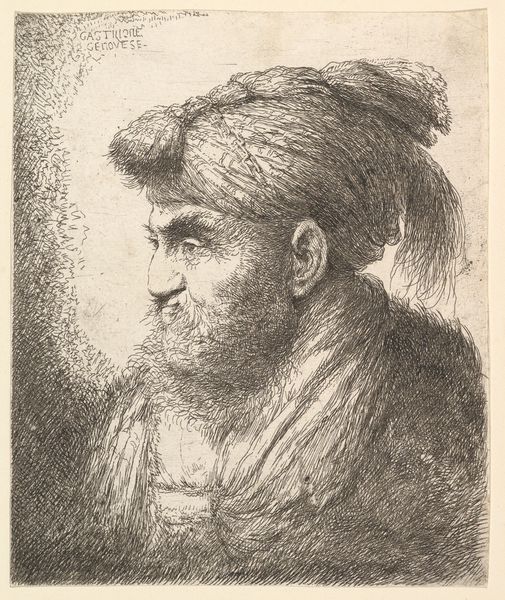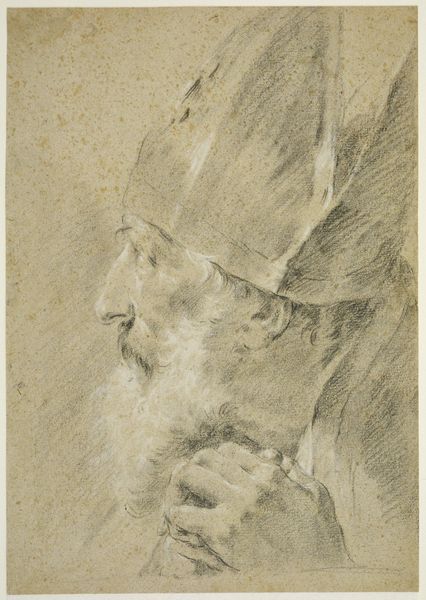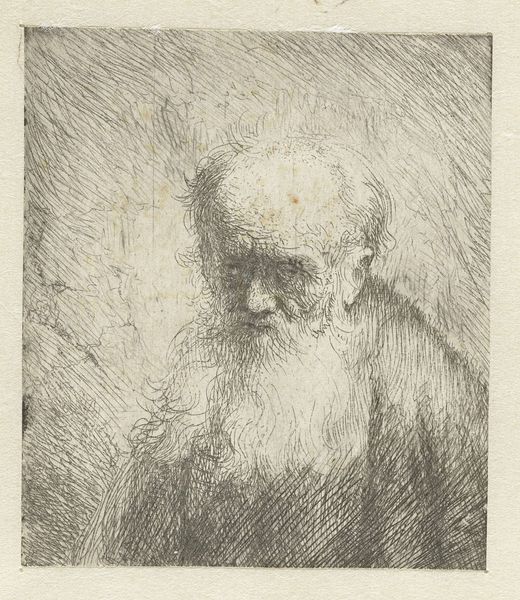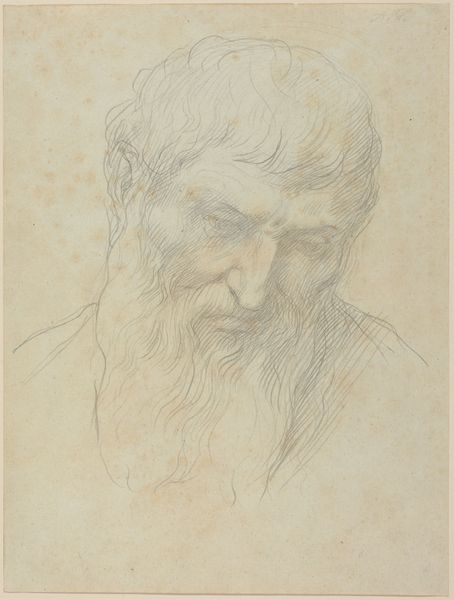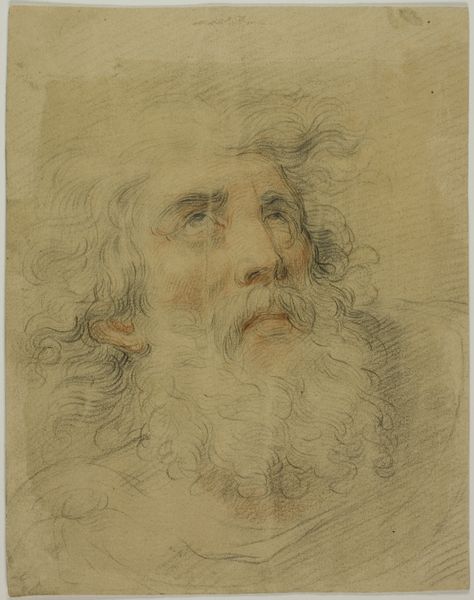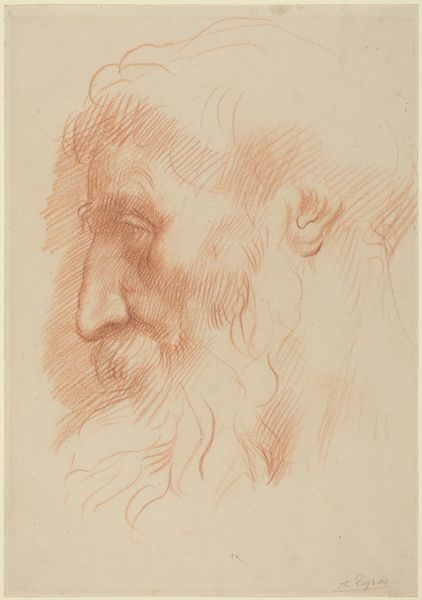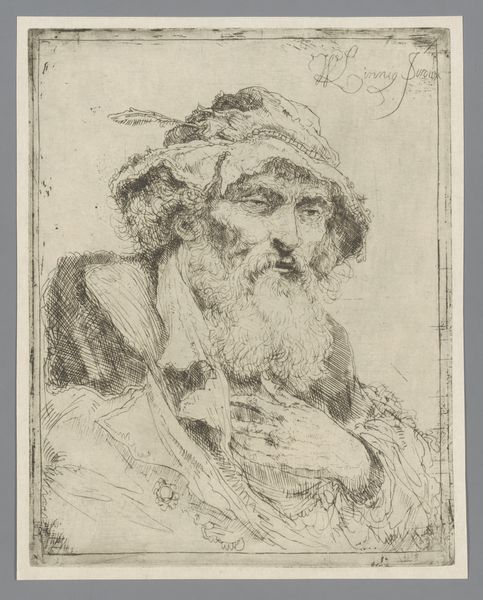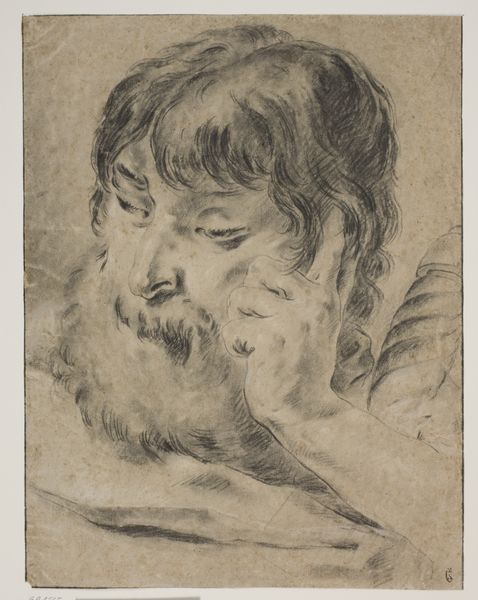
drawing, etching
#
portrait
#
drawing
#
baroque
#
etching
#
figuration
#
pencil drawing
#
portrait drawing
Dimensions: height 109 mm, width 80 mm
Copyright: Rijks Museum: Open Domain
Editor: So, here we have "Head of an Old Man with a Beard" by Salvatore Castiglione, made between 1645 and 1650. It's an etching. I'm struck by how simple the materials are, yet it conveys so much about the subject. What do you see when you look at this piece? Curator: The etching medium is key. Consider the labour involved: the artist manipulates metal, applies acid. Each line is a controlled act of destruction and creation. The material tells us about printmaking processes in 17th-century Italy and raises questions about how this affected art's accessibility. It’s far from a unique, handcrafted object like a painting; many prints could be made. Editor: That's fascinating! So the *making* of it gives insight into its cultural value? I hadn’t thought about it that way. Curator: Absolutely. How does this material consideration impact its value versus, say, a painting also depicting an "old man with a beard"? Is one considered "higher" art? And how does the possibility of reproducibility democratize art, or cheapen it? Editor: That really flips my understanding on its head. It is considered art for the masses because they are easily reproducible, but the etching process also shows great work that I failed to recognize at first glance. Curator: Exactly. It shows that the art object isn’t precious solely due to uniqueness. It’s about the labour invested and who had access to it. That really contextualizes the themes too, wouldn’t you say? Editor: Yes, definitely. Considering it just as a material object really changed my perception of the artist’s process, and its place in society. Curator: Mine too. Every artwork really does have a rich history of materials and the labor put in the artworks.
Comments
No comments
Be the first to comment and join the conversation on the ultimate creative platform.
